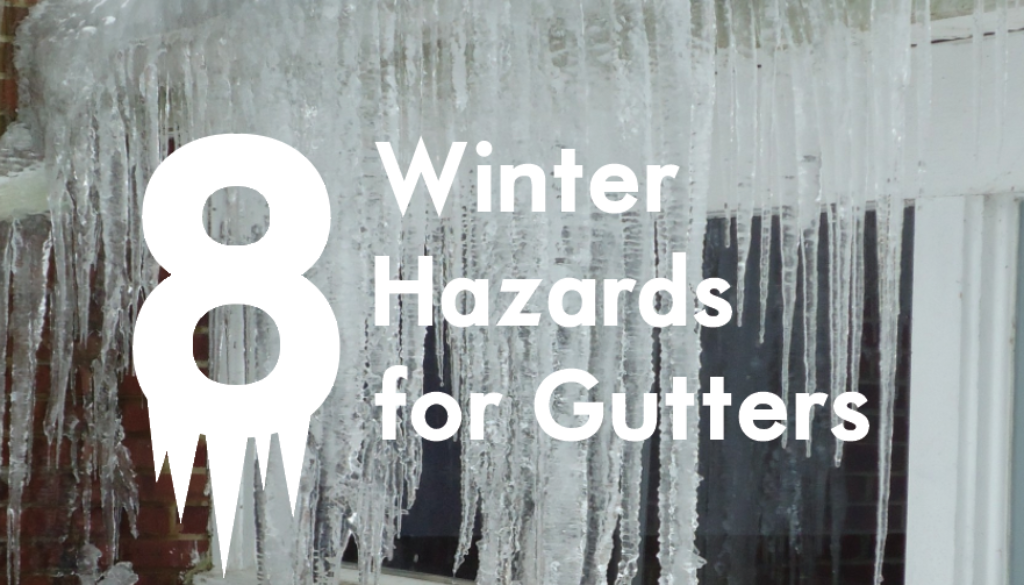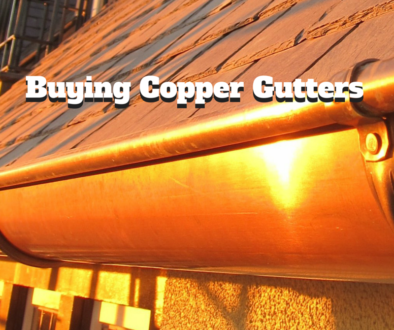8 Winter Hazards for Gutters
It’s the most wonderful time of the year! At least, if you are human and inside the house.
For roofs and gutters, this is probably the most terrible time of year. Extreme cold and varying precipitation can cause havoc on your rainwater system, especially if they are vinyl or aluminum. The following are some threats to roofs and gutters that you should be aware of as we approach the hard winter, as well as reasons why choosing copper or zinc could help stay catastrophes.
Condensation. This is a much bigger problem than most people realize. The heat from your home and the snow and ice above meet at some point, clashing in temperature. While no gutter can solve this issue, properly insulated roofing can help minimize the condensation. Occasional removal of excessive ice or snow is also a plus, especially if you live in a climate that sees winter weather for several months.
Ice Dams. As excessive snow falls, melts, and refreezes, it creates a potentially hazardous problem called in ice dam. Heating solutions can be applied to help prevent this. But most importantly, a reliable gutter system is key to preventing this. If the melted moisture is allowed to flow out, dams can be kept at a minimum.
Icicles. These stone cold stalactites are particularly hazardous to rainwater systems. The best gutter system in the world cannot compensate for heavy blizzards, which cover everything. As melting happens through the day, icicles can form and cause hundreds of pounds of drag. Less dense metal such as aluminum has been known to bend and brake. Properly installed copper and zinc gutters are almost never subject to such a demise.
Excessive Snow Loads. Depending on the slope of a roof, houses have been known to collect nearly 65 inches of snow. When this kind of accumulation happens, it is imperative that some is removed during a break in snow. Gutters cannot prevent this but snow weight has been known to push lower quality systems right off a house.
Clogging. Before winter hits, it is important that gutters are cleaned out. Rigged aluminum gutters are infamously high in friction and need cleaned often. European style gutters are designed to reduce friction and often have leaderheads with wide mouths. When winter comes, clogging tends to cause the two issues stated next.
Bursting pipes. There tends to be two causes to bursting pipes: clogging and seam separation. Clogging is preventable but seam issues are not. Crimped seams, no matter how tight, can allow air and water inside the seam. With the expansion of ice inside the seam, seamed downspouts and gutter splices have been known to separate or even violently burst. Our downspouts are all seamless and do not have this weakness. With most parts soldered together, you can rest assured that your gutters are safe.
Leaks. While the above is a cause of leaks, there is another side effect to loose water. It defeats the purpose of having gutters! As the melting snow leaks onto the eaves or even walls, it can cause irreparable damage to the roof and siding. A well-installed high-end gutter system is the best prevention of any leak.
Contraction. Face it, Mother Nature will win if she wants to. Something many people don’t realize is that highly cold weather will do its best to warp metal. Homeowner have reported popping noises as aluminum and other low-grade gutters physically shift in their hangers, bending and even pulling out of their original placement. While contraction alone cannot pull out gutters, it weakens the system. Denser materials such as copper and zinc still contract, but do so on a much smaller scale.



